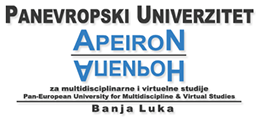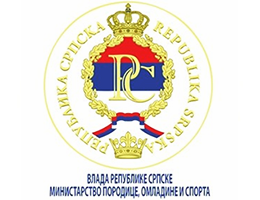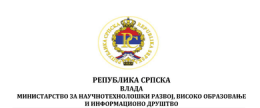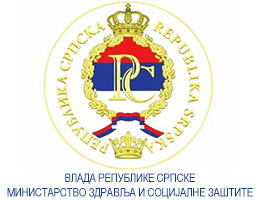Evaluation of the Scale of Perception of Active Lifestyle of Students
Volume 6, Issue 1 (2016)
Volume 6, Issue 1 (2016)
Evaluation of the Scale of Perception of Active Lifestyle of Students
Abstract:
In that context of ever more intensive affirmation of active lifestyle, the problem of the presence of healthy lifestyle habits in the young population is today one of the most frequently asked questions when evaluating their conditions of life and work. Research shows that there is a growing trend in the number of youth, especially amongst the student population, who predominantly exhibit lifestyle habits characterized as unhealthy.
The research conducted on a sample of 240 examinees, students of The Faculty for Sports and Tourism from Novi Sad and the College of Vocational Studies for preschool teachers and sports trainers from Subotica, had as an aim to identify the necessary components that would reflect the construct of the scale used to determine the basic elements of perception of active lifestyle in the student population. By applying the purposefully constructed questionnaire (Perception of Active Lifestyle) an evaluation was conducted of a certain number of indicators pointing to perception intensity of the presence of healthy lifestyle determinants in students.
The results show that the applied questionnaire is distinguished by 15 stable indicators (items), and that the PAL scale has a good internal consistency (C. alpha = .865). By factor analysis, a suitable scale validity was determined (KMO = 0.690); (Sig=0.000), and the analysis of main components achieved a statistically acceptable parsimony and defined a single constituent structure. It is possible to apply this questionnaire as a unique scale that results in average value (scalar average) in manifested space, calculated from the grades given by the examinees to certain aspects of individual perception of active lifestyle.
The research conducted on a sample of 240 examinees, students of The Faculty for Sports and Tourism from Novi Sad and the College of Vocational Studies for preschool teachers and sports trainers from Subotica, had as an aim to identify the necessary components that would reflect the construct of the scale used to determine the basic elements of perception of active lifestyle in the student population. By applying the purposefully constructed questionnaire (Perception of Active Lifestyle) an evaluation was conducted of a certain number of indicators pointing to perception intensity of the presence of healthy lifestyle determinants in students.
The results show that the applied questionnaire is distinguished by 15 stable indicators (items), and that the PAL scale has a good internal consistency (C. alpha = .865). By factor analysis, a suitable scale validity was determined (KMO = 0.690); (Sig=0.000), and the analysis of main components achieved a statistically acceptable parsimony and defined a single constituent structure. It is possible to apply this questionnaire as a unique scale that results in average value (scalar average) in manifested space, calculated from the grades given by the examinees to certain aspects of individual perception of active lifestyle.
Keywords:
perception, active lifestyle, scale, students
Full Text:
References:
- Bartlett, M.S. (1954). A note on the multiplyng factors for various chi square approximations. Journal of the Royal Statistical Society, 16 (Series B), 296-298.
- DeVellis, R.F. (2003). Scale development: Theory and applications (2nd ed.). Thousand Oaks, California: Sage. Kaiser, H. (1970). A second generation Little Jify. Psychometrika, 35, 401-415.
- Kaiser, H. (1974). An index of factorial simplicity. Psychometrika, 39, 31-36.
- Kattel, R. (1966). The scree test for the number of factors. Multivariate Behavioral Research, 1(2), 245-276.
- Kvaak, E., Meyer, H., & Tverdal, A. (2004). Food habits, physical activity and body mass index in relation to smoking status in 40–42 year old
- Norwegian women and men. Preventive Medicine, 38(1), January,1-5.
- Međedović, B., Perić, D., & Ahmetović, Z. (2013). The physical work capacity of the students from Novi Sad. FIS comunications, Book of proceedings. Niš: Faculty of sport and physical education.
- Myint, P., Surtees, P., Wainwright, N., Wareham, N., Bingham, S., Luben, R., Wwlch, A., Smith, R., Harvey, I., & Khaw, K. (2007). Modifiable lifestyle behaviors and functional health in the European Prospective Investigation into Cancer (EPIC)-Norfolk population study. Preventive Medicine, 44(2), February, 109-116.
- Miliša, Z., & Bagarić, M. (2012). Behaviour Styles and Value Orientations. Medianali, 6 (12), 68-104.
- Nešić, M., Perić, D., Ahmetović, Z., & Zubanov, V. (2014), Some lifestyle features of Novi Sad students in relation to the subjective perception of health. In: Pantelić, s. (ed.). FIS komunikacije, Zbornik radova, Niš: The Faculty of Sports and Physical Education, 388 – 397.
- Nešić, M., Rajić, D., Milić, Z., & Radoš, L. (2015). Life habits as a determinant of active lifestyle of Subotica students. In: Rajuć, D. (ed.) 8th International Interdiciplinary Scientific
- Conference ‹›New Horizons in Education, Culture and Sports“, Zbornik radova, Subotica: College of Vocational Studies for preschool teachers and sports trainers, 166-179.
- Pallant, J. (2009). SPSS Survival Manual. Belgrade: Mikro knjiga.
- Pierro, A., Mannetti, L., & Livi, S. (2003). Self-identity and the theory of planned behavior in the prediction of helath behavior and leisure activity. Self & identity, 2, 47-60.
- Sharrkey, J.B., & Gaskill, E.S. (2008). Exercise and Health. Belgrade: Datastatus.






